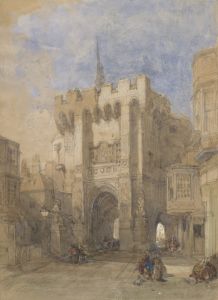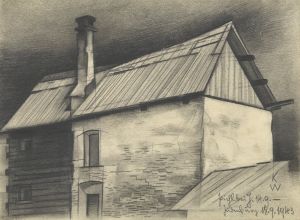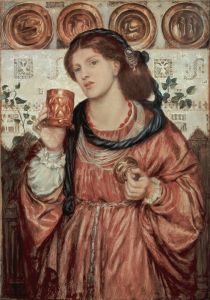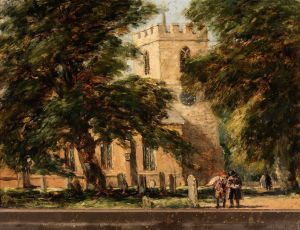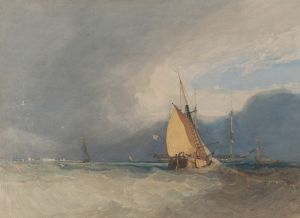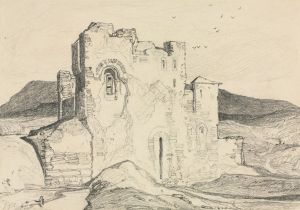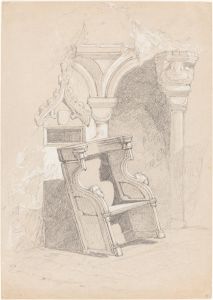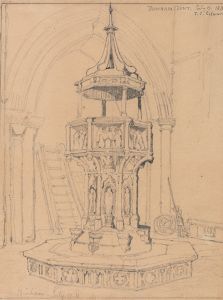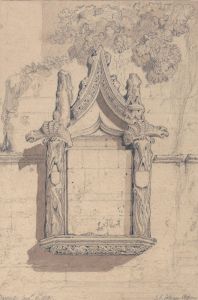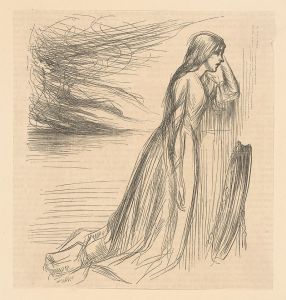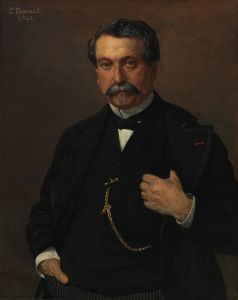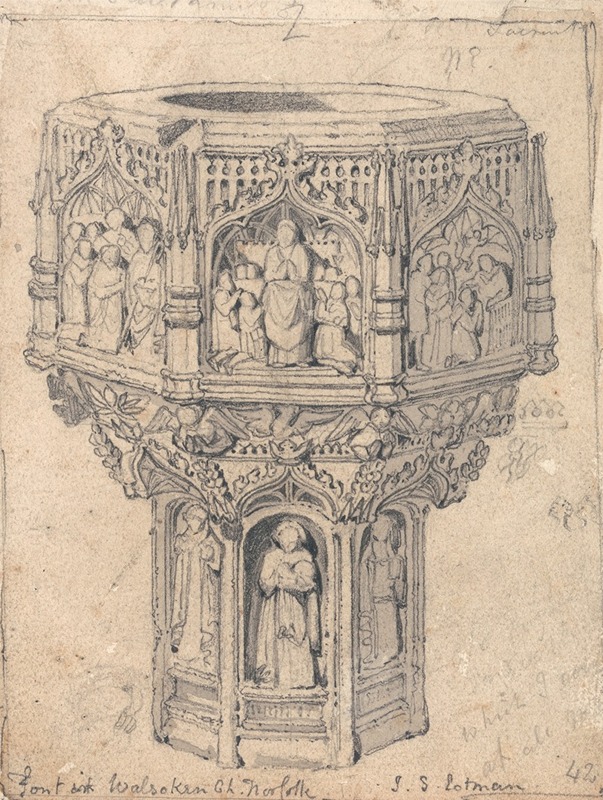
A Font in Walsoken Church, Norfolk
A hand-painted replica of John Sell Cotman’s masterpiece A Font in Walsoken Church, Norfolk, meticulously crafted by professional artists to capture the true essence of the original. Each piece is created with museum-quality canvas and rare mineral pigments, carefully painted by experienced artists with delicate brushstrokes and rich, layered colors to perfectly recreate the texture of the original artwork. Unlike machine-printed reproductions, this hand-painted version brings the painting to life, infused with the artist’s emotions and skill in every stroke. Whether for personal collection or home decoration, it instantly elevates the artistic atmosphere of any space.
"A Font in Walsoken Church, Norfolk" is a watercolor painting by the renowned English artist John Sell Cotman, created in 1813. Cotman, a prominent figure in the Norwich School of painters, is celebrated for his contributions to landscape and architectural painting. His works are characterized by their delicate use of color and attention to detail, often capturing the serene beauty of the English countryside and its historical architecture.
This particular painting depicts the baptismal font located in the Church of All Saints in Walsoken, a village in Norfolk, England. The church itself is a significant historical structure, known for its Norman architecture and rich history dating back to the 12th century. The font, an essential element of the church's interior, is used for the Christian rite of baptism and is often ornately designed, reflecting the artistic and cultural values of the period in which it was created.
Cotman's depiction of the font is notable for its meticulous attention to architectural detail and the subtle interplay of light and shadow. His use of watercolor allows for a soft yet precise rendering of the stonework, capturing the texture and form of the font with remarkable clarity. The painting exemplifies Cotman's skill in architectural studies, a genre in which he excelled and contributed significantly to the art world.
The choice of subject matter reflects Cotman's interest in historical and ecclesiastical architecture, a common theme in his body of work. During the early 19th century, there was a growing fascination with the medieval past in England, often referred to as the Gothic Revival. Artists like Cotman played a crucial role in documenting and celebrating the architectural heritage of the country, contributing to a broader cultural appreciation of historical structures.
Cotman's work was part of a larger movement within the Norwich School, which sought to capture the unique landscapes and architecture of the Norfolk region. The school, active during the early to mid-19th century, was one of the first provincial art movements in Britain and included artists such as John Crome and Joseph Stannard. Cotman's contributions to the school were significant, and his works continue to be studied and admired for their technical proficiency and aesthetic appeal.
"A Font in Walsoken Church, Norfolk" is housed in the British Museum, where it is part of a larger collection of Cotman's works. The museum's collection provides valuable insight into Cotman's artistic process and the broader context of his work within the Norwich School. His paintings, including this one, are appreciated not only for their artistic merit but also for their historical significance, offering a window into the architectural and cultural landscape of early 19th-century England.
In summary, John Sell Cotman's "A Font in Walsoken Church, Norfolk" is a testament to the artist's skill in capturing the intricate details of historical architecture through watercolor. It reflects both his personal artistic interests and the broader cultural movements of his time, making it a valuable piece within the canon of English art history.





